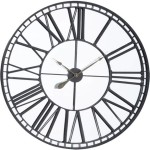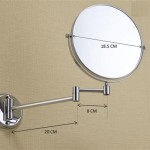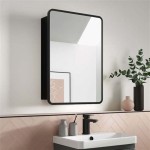Side Mirrors For Cars: Understanding Functionality, Types, and Maintenance
Side mirrors, also known as wing mirrors, are critical components of any vehicle, providing drivers with a view of the areas beside and behind the car. These mirrors significantly contribute to driver safety by enabling the assessment of the surrounding environment, facilitating safe lane changes, and aiding in parking maneuvers. Understanding the various types, functionalities, and maintenance aspects of side mirrors is crucial for all vehicle operators.
The basic function of a side mirror is to reflect an image of the area alongside and behind the vehicle, allowing the driver to perceive objects and other vehicles that may not be visible directly through the windshield or rear-view mirror. The angle and curvature of the mirror surface are carefully engineered to provide a wide field of view while minimizing distortion. This field of view is a vital part of the driver's overall situational awareness.
Side mirrors are typically mounted on the doors or fenders of the vehicle, positioned to offer the best possible view without obstructing the driver's line of sight. Their placement and adjustability allow drivers of different sizes and seating positions to customize the mirror's view to their individual needs and preferences. The ability to adjust the mirrors is paramount for ensuring a clear and comprehensive view of the surrounding traffic.
Types of Side Mirrors
Side mirrors come in various types, each with its own advantages and disadvantages. Understanding these differences is key to appreciating the evolution and technological advancements in mirror design.
Flat Mirrors: These mirrors provide a 1:1 representation of the scene being reflected. They offer an accurate depiction of distance, which is beneficial for judging how far away other vehicles are. However, flat mirrors have a limited field of view compared to other types, requiring drivers to rely more on blind spot checks. Despite their limitations, flat mirrors are commonly used on the driver's side in some regions due to their accurate distance representation.
Convex Mirrors: Convex mirrors feature a curved surface that expands the field of view. This wider view enables drivers to see more of the area surrounding their vehicle, reducing blind spots. However, convex mirrors distort the perception of distance, making objects appear farther away than they actually are. A warning is often printed on convex mirrors to remind drivers of this distortion. Convex mirrors are frequently employed on the passenger side to compensate for the reduced visibility on that side of the vehicle.
Aspherical Mirrors: Aspherical mirrors combine both flat and convex sections. Typically, the inner portion of the mirror nearest the driver is flat, providing an accurate representation of distance. The outer portion of the mirror is convex, offering a wider field of view and minimizing blind spots. This combination is designed to provide both distance accuracy and a broad view of the surroundings. Aspherical mirrors are often found on higher-end vehicles due to their improved functionality.
Electrically Adjustable Mirrors: These mirrors can be adjusted remotely from inside the vehicle using electric motors. This allows the driver to fine-tune the mirror position without having to physically reach out and adjust them. Electrically adjustable mirrors are convenient for multiple drivers sharing the same vehicle, as each driver can easily customize the mirror settings to their preferred position. Furthermore, they are often equipped with memory functions that can store preferred settings for different drivers.
Heated Mirrors: Heated mirrors incorporate heating elements within the mirror glass to melt ice and snow or to defog the mirror surface. This feature significantly improves visibility in cold or humid weather conditions. The heating element is typically activated by a switch on the dashboard and deactivates automatically after a certain period of time to prevent overheating or battery drain. Heated mirrors are a valuable safety feature in regions with cold climates.
Folding Mirrors: Folding mirrors can be manually or electrically folded inward towards the vehicle's body. This feature is particularly useful in tight parking spaces or narrow streets, where protruding mirrors can be easily damaged. Electrically folding mirrors can often be programmed to fold automatically when the vehicle is parked and unfold when the vehicle is started. This adds an extra layer of convenience and protection.
Auto-Dimming Mirrors: These mirrors automatically darken in response to bright headlights from vehicles behind, reducing glare and improving driver comfort, especially at night. Auto-dimming mirrors use sensors to detect the amount of light and adjust the reflectivity of the mirror accordingly. This feature helps to prevent temporary blindness caused by bright headlights, enhancing safety during nighttime driving.
Functionality and Advanced Features
Beyond basic reflection, modern side mirrors often incorporate advanced features that enhance safety and convenience. These additions integrate with other vehicle systems to provide a comprehensive driving experience.
Blind Spot Monitoring Systems: Many new vehicles are equipped with blind spot monitoring (BSM) systems that use sensors to detect vehicles in the driver's blind spots. When a vehicle is detected, a warning light typically illuminates in the side mirror to alert the driver. Some systems also provide an audible warning. BSM systems significantly reduce the risk of collisions during lane changes.
Turn Signal Indicators: Some side mirrors incorporate turn signal indicators, which are small LED lights that flash in conjunction with the vehicle's turn signals. These indicators provide an additional visual cue to other drivers, pedestrians, and cyclists, increasing the visibility of the vehicle's intentions and enhancing safety during turns and lane changes.
Puddle Lights: Puddle lights are small lights located on the underside of the side mirrors that illuminate the area around the vehicle's doors. These lights are activated when the doors are unlocked or opened, providing illumination for entering or exiting the vehicle in dark conditions. Puddle lights enhance safety and convenience by preventing drivers and passengers from stepping into puddles or other hazards.
Cameras: Some advanced systems integrate cameras into the side mirrors to provide a wider view of the surroundings. These cameras can be used for features such as surround-view monitoring, which provides a 360-degree view of the vehicle's surroundings on the infotainment screen. This feature is particularly helpful for parking and maneuvering in tight spaces.
Memory Settings: As mentioned earlier, electrically adjustable mirrors often include memory settings that allow drivers to store their preferred mirror positions. This is particularly useful for vehicles that are shared by multiple drivers, as each driver can easily recall their customized mirror settings at the touch of a button. The memory settings are typically linked to the driver's seat position and other vehicle settings.
Maintenance and Repair
Proper maintenance of side mirrors is essential for ensuring their optimal performance and longevity. Regular cleaning and prompt repairs can help to maintain a clear and unobstructed view of the surroundings.
Cleaning: Side mirrors should be cleaned regularly to remove dirt, dust, and other debris that can obstruct the view. A mild soap and water solution is typically sufficient for cleaning the mirror surface. Avoid using abrasive cleaners or harsh chemicals, as these can damage the mirror coating. A microfiber cloth is ideal for drying the mirror surface without leaving streaks or scratches.
Inspection: Regularly inspect side mirrors for cracks, chips, or other damage. Even minor damage can distort the view and compromise safety. If any damage is detected, the mirror should be repaired or replaced as soon as possible. Check the mirror’s adjustability and ensure that the electric motors (if equipped) are functioning properly.
Repair: Minor damage, such as small cracks or chips, can sometimes be repaired using specialized repair kits. However, for more extensive damage, it is typically necessary to replace the entire mirror assembly. Replacement mirrors can be purchased from auto parts stores or online retailers. It is important to choose a replacement mirror that is compatible with the vehicle's make, model, and year.
Replacement: Replacing a side mirror typically involves removing the old mirror assembly and installing the new one. The process may vary depending on the vehicle's design, but it generally involves removing the interior door panel and disconnecting any electrical connectors. It is important to follow the manufacturer's instructions carefully to avoid damaging any components. If the replacement process seems too complicated, it is best to consult a qualified mechanic.
Adjustments: After replacing or repairing a side mirror, it is essential to adjust it properly to ensure a clear and comprehensive view of the surroundings. Adjust the mirror so that a small portion of the vehicle's side is visible, providing a reference point. The majority of the mirror should be focused on the area alongside and behind the vehicle. Make sure to adjust the mirrors to suit individual needs and seating position before driving.
The ongoing development of side mirror technology highlights the industry’s commitment to improving driver safety and convenience. As technology advances, side mirrors will likely continue to evolve, incorporating more advanced features and integrating more seamlessly with other vehicle systems. These advancements will further enhance the driving experience and improve overall road safety.

This Is How You Adjust And Use Your Side Mirrors Properly

How To Properly Use Your Car S Side Mirrors

Side View Mirror Wikipedia

Why Haven T S Replaced Side Mirrors The Risks Of View

Racing Mirrors For Cars Kdc Race Car Side

How To Adjust Your Mirrors Avoid Blind Spots

Wide Angle Side Mirrors Useful Or Annoying Cars Com

How To Properly Set Your Side Mirrors

How To Position Your Car S Mirrors 13newsnow Com

Tips For Adjusting Your Rear View And Side Mirrors








